On the trail of snowy owls
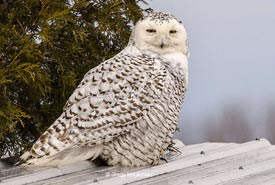
Snowy owl (Photo by Gregg McLachlan)
When I got an inside tip in late December that numerous migrating snowy owls were being spotted near Long Point, Ontario, I knew I had to grab my DSLR, 600mm lens, fingerless gloves, four layers of clothing, and get down there fast. The Long Point...
Camping in a winter wonderland
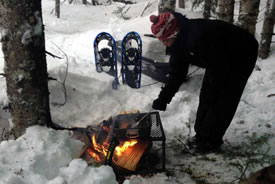
Winter is one of the best times to get outside and spend time in the fresh air, immersed in our amazing wilderness. (Photo by Canadian Voyageurs)
We live in Northern Ontario, where winters are long and harsh. Here residents are used to massive snowstorms and deep freezes. Many people spend their winters complaining about the cold and the snow; they coop themselves indoors and suffer cabin...
Caring for babies at the Cowichan Garry Oak Preserve
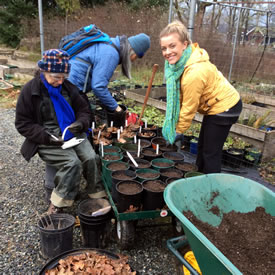
Maxine Leichter lends a hand during a Conservation Volunteers event at CGOP (Photo by NCC)
What does an environmentalist grandmother do who lives thousands of miles from her grandchildren? She takes care of baby plants instead at the Nature Conservancy of Canada’s (NCC's) Cowichan Garry Oak Preserve (CGOP) near Quamichan Lake and...
The ultimate Canadian road trip, by canoe
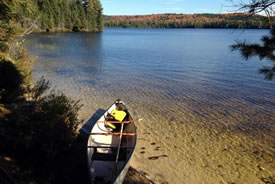
In the spring of 2015, Canadian Voyageurs will cross the country by canoe (Photo by Canadian Voyageurs)
In the spring of 2015, Gerry, my husband and I will cross Canada by canoe as the Canadian Voyageurs. When people ask us why we are doing it, my first response is always: Because we can! Because life is about adventure! The reasons, though, are...
Bring Back the Bluebirds: Putting translocation to work to restore a rare ecosystem’s flagship species
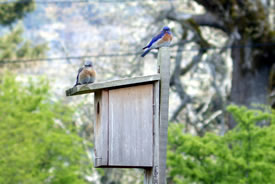
In 2014, this breeding pair of western bluebirds returned to NCC’s Cowichan Garry Oak Preserve to nest for a second year in a row. (Photo by Jemma Green, GOERT)
As recently as 60 years ago, the gentle, vibrantly coloured western bluebird was a common occurrence in the species-rich Garry oak meadows and savannahs of the Salish Sea region of British Columbia and Washington. But as their habitat became...
British Columbia’s forest industry today
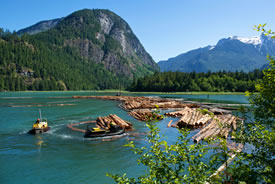
Orford Bay, BC (Photo courtesy of Interfor)
I grew up hiking and backpacking with my family in British Columbia’s woods. I chose to become a forester because of my inherent desire to take care of the natural environment; I wanted to contribute to the thoughtful management of our...
Historical ecology: Probing the mysteries of ancient landscapes
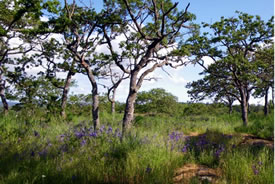
A sunny Garry oak savannah (Photo by Jenny McCune)
A challenge for humans in our attempts to manage ecosystems is that we’re often dealing with beings much longer lived than ourselves. For example, a Douglas-fir tree can live to be 800 years old or more. A century is a long time for a human,...
Pollinator edge effects on Manitoba's grasslands
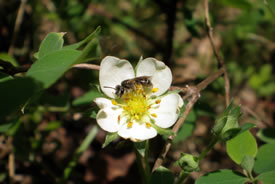
A small andrenid bee sheltering in a wild strawberry flower (Photo by Marika Olynyk)
Animal pollination is a key ecological process, ensuring the reproduction and genetic diversity of most flowering plants, and providing food for pollinators. In Manitoba, insects are the most important pollinators. Our short summers are busy as...
Powder Islands adventure
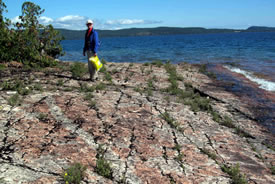
Susan Bryan checks the plants on a section of rock pavement (Photo by Mike Bryan)
"I haven’t seen that before. It's a lifer!" You may be thinking birds, but for me the "lifer" was a delicate plant with white blossoms growing in a crack on a bare cliff face. Hoary draba is a member of the mustard family and usually found...
The importance of kelp
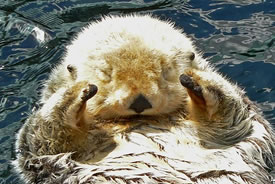
Sea otter, Vancouver Aquarium (Photo by Wikimedia Commons, Stan Shebs)
Sea otters are a keystone species. They play an important role in the health and stability of near shore marine ecosystems. They eat sea urchins and other invertebrates that eat vast quantities of giant kelp. In the absence of sea otters, grazing...

